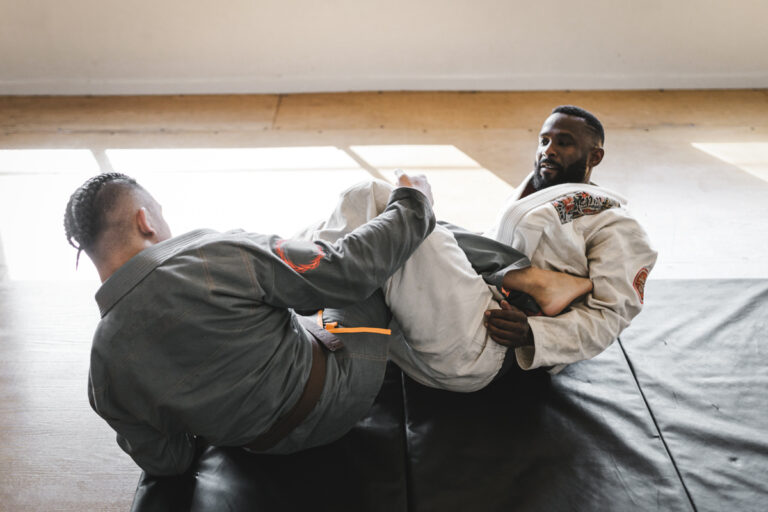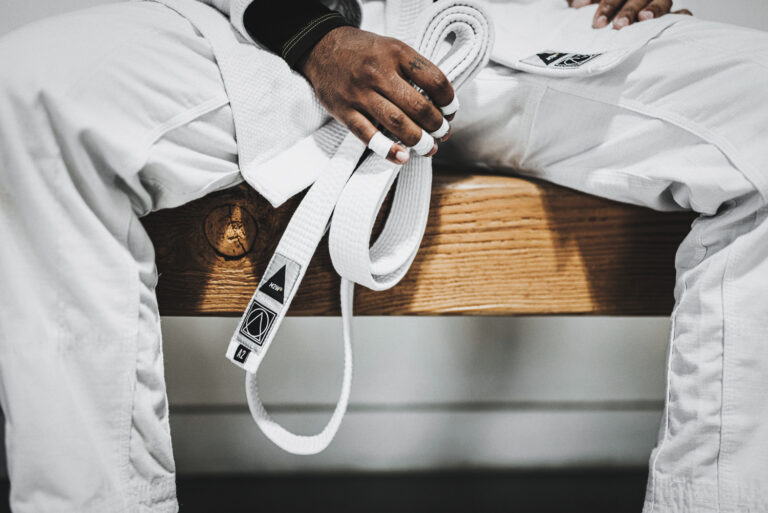In this post, we will tackle the essential aspects of the BJJ belt ranking system. From the foundational white belts to the pinnacle of achievement with black belts and beyond to the coral belts, we’ll be exploring the intricacies of the BJJ Belt System.
The belt ranking system in Brazilian Jiu-Jitsu (BJJ) traces its roots back to its founder, Carlos Gracie Sr., and his brother Helio Gracie, who developed the martial art in the early 20th century. This hierarchical system serves as a symbol of a practitioner’s progress and skill level within the discipline of BJJ.
In BJJ, practitioners advance through various belt ranks, starting from the white belt, signifying a beginner, and progressing through blue, purple, brown, and finally, black belt. Each belt rank represents a different stage of proficiency and mastery in the art of Brazilian Jiu-Jitsu.
The belt ranking system is not solely based on technical knowledge but also encompasses aspects such as dedication, perseverance, and time spent training on the mats. Promotions are typically awarded by experienced instructors and are a significant milestone in a practitioner’s journey in BJJ.
The BJJ belt ranking system plays a crucial role in fostering a structured learning environment and providing practitioners with tangible goals to strive for as they progress in their training. It also fosters a sense of community and camaraderie among practitioners, as they support and encourage each other in their pursuit of higher ranks and greater proficiency in BJJ techniques.

What Are the Belts in BJJ?
White Belt:
Minimum Age: No minimum – this is where all ages begin
Number of Stripes: 4
Average Years Spent: 1-2
Blue Belt:
Minimum Age: 16
Number of Stripes: 4
Average Years Spent: 2-3
Purple Belt:
Minimum Age: 16
Number of Stripes: 4
Average Years Spent: 2-3
Brown Belt:
Minimum Age: 18
Number of Stripes: 4
Average Years Spent: 2-3
Black Belt:
Minimum Age: 19
Number of Degrees: 6
Title: Black Belt or Professor (3rd Degree and up)
Average Years Spent: Up to 20+ years
Coral (Red and Black) Belt:
Minimum Age: 50
Number of Degrees: 2
Title: Master
Average Years Spent: Up to 25+ years
Red Belt:
Minimum Age: 67
Number of Degrees: 2
Title: Grand Master
Average Years Spent: Up to 25+ years
Green and Yellow Belt:
The Green and Yellow Belt in BJJ is used to distinguish athletes in competition. It has no relation to rank.
Common Questions about BJJ Belts
What are the belts in BJJ?
White, Blue, Purple, Brown, Black. For adult athletes, the belts in Brazilian Jiu-Jitsu follow a progression from white to blue to purple to brown to black. Within each belt rank, you can earn white stripes that further signal progress. Typically, belts have a max of four stripes before you are eligible for promotion to the next belt, meaning a white belt with four stripes is eligible for a blue belt.
What comes after white belt?
For adult practitioners of BJJ, meaning 16 years or older, the blue belt comes after the white belt. For juniors, meaning up to age 15, the grey belt comes after the white belt.
How long does it take to get a blue belt in BJJ?
1 to 2 years. This will vary based on your training consistency, skill development, and the school’s grading criteria, but athletes will typically earn a blue belt within 1 to 2 years. After that, each subsequent belt will usually take longer, ranging from 2-5 years to achieve each new rank.
How long does it take to become a black belt in BJJ?
The average time is anywhere from 8 to 15 years. This will depend on your training consistency, skill progression, and the requirements at your specific school.
Can I wear a black gi as a white belt?
Yes. Gi color does not indicate rank. You can wear any color gi you want as a white belt, as long your school does not have its own requirements. The most popular BJJ gi colors are white, black, and royal blue, as these are accepted at almost every school and competition.
Are there belts in No-Gi BJJ?
Yes. No-Gi BJJ has belts just like Gi, and No-Gi schools do belt promotions just like traditional Gi schools. However, unless someone is wearing a “ranked rash guard,” there is no way to tell an athlete’s rank in No-Gi.
How can you tell someone’s belt in No-Gi?
There is no way to tell someone’s rank in No-Gi BJJ, unless they are wearing a “ranked rash guard,” which typically has a stripe or paneling in the color of their belt rank.
For other frequently asked questions, check out our Beginner’s FAQ here.



